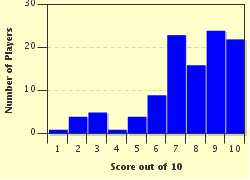Quiz Answer Key and Fun Facts
1. Gordon has used the subject of ships, sailors, sailing, and the sea to write several songs, including "The Wreck of the Edmund Fitzgerald". Which of the following songs is about that subject?
2. Gordon Lightfoot recorded his first album in 1966, and only nine years later recorded his 11th album for release. With eleven successful album releases under his belt, Gordon put together a two-record set in 1975 containing some of his very best songs. What was this double record set called?
3. This Gordon Lightfoot album was released in 1970 with the title "Sit Down Young Stranger". One of the songs on it became such a huge hit that the record company decided that subsequent runs of the album would be changed to the same title of this hit song. By what hit song title was the record renamed?
4. Gordon Lightfoot turned this tale of a fictitious, chivalrous dreamer who immerses himself in the fantasy world of the books he reads into a song of life and adventure. The song's introduction goes:
"Through the woodland, through the valley,
Comes a horseman, wild and free,
Tilting at the windmills passing,
Who can this brave young horseman be?"
Which of Lightfoot's many ballads do these words come from? (Ask the people of La Mancha, Spain if you don't know).
5. Gordon Lightfoot released two albums in 1972. Both went platinum in Canada and received high praises for their "acoustic perfection". The title of one of the records might remind some of their grandfather or uncle sitting around and listening to their 78s. What's the title of the second album Gord released in 1972?
6. "When it's midnight on the meadow, and the cats are in the shed.
And the river tells a story at the window by my bed.
If you listen very closely, be as quiet as you can.
In the yard you'll hear him, it is ___."
These lyrics are from a Lightfoot song that reads like a children's bedtime story. Who is Gordon singing about that will complete this rhyming refrain?
7. One of Gordon Lightfoot's albums was actually re-released in Czechoslovakia with the moniker "Hubda a Slova". What is the English translation of the title "Hubda a Slova"? (Hint: wearing a shawl might help stop this).
8. Which of Gordon Lightfoot's albums was the first to top one million (platinum) copies sold in the U.S.?
9. In 1988, Gordon Lightfoot released the re-recordings of 18 of his best tunes. What did he call this greatest hits compilation?
10. Gordon Lightfoot was never one to shy away from addressing world issues, such as racial inequality and human injustices, through his music. In 1971, he came out with a song that expressed the fear, uncertainty, and sadness experienced by young men going off to (and returning from) Vietnam. What song is about soldiers' psychological and emotional turmoil? (The song and album title are the same and speak of a happier time in a young man's life).
Source: Author
krazykritik
This quiz was reviewed by FunTrivia editor
Pagiedamon before going online.
Any errors found in FunTrivia content are routinely corrected through our feedback system.

